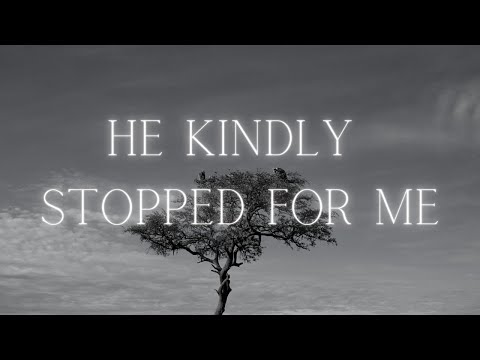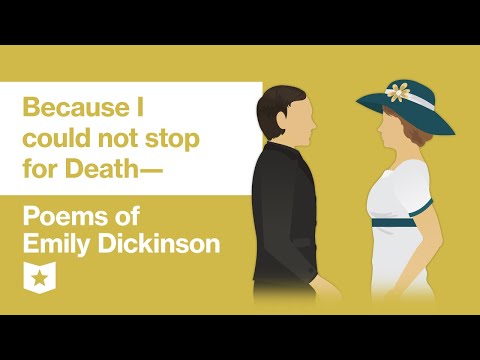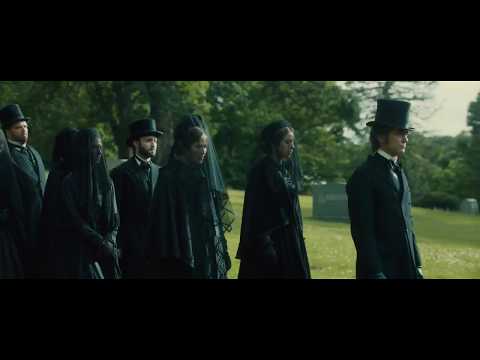Emily Dickinson’s haunting poem “Because I could not stop for Death” takes us on an introspective journey, blending themes of mortality and the elusive nature of time. Its rich layers invite not just reflection but a broader conversation about how different cultures, literature, and modern storytelling interpret the concept of death. Buckle up, dear readers; we’re diving into this resonate narrative with youthful zest and a sprinkle of humor!
7 Timeless Interpretations of ‘Because I Could Not Stop for Death’
1. Transcendentalism and the Infinite
Dickinson’s work echoes the principles of Transcendentalism, a literary movement led by thinkers like Ralph Waldo Emerson. His ideas about individualism and connecting with nature create a fascinating backdrop for understanding “Because I could not stop for Death.” When death is seen as a passage to greater spiritual awareness, it gels beautifully with Emerson’s belief in the human spirit’s creative power. So in essence, death becomes a journey—not an end but a leap into something more profound.
2. Modern Cinema’s Take on Mortality
Movies tackle mortality in fascinating ways, reflecting Dickinson’s sentiments. For instance, The Fault in Our Stars dives into teenage love amidst terminal illness, reminding us how life’s brevity enhances its beauty. Similarly, Soul whiskingly explores what happens after we kick the bucket, asking important questions about the meaning of life. Both films challenge us to see life, much like Dickinson invites us to, through the lens of mortality—sometimes it’s when we’re faced with death that we truly start appreciating every heartbeat.
3. Philosophical Underpinnings in ‘Because I Could Not Stop for Death’
Let’s pop open the philosophical toolbox, shall we? Here we find ideas from folks like Martin Heidegger, who believed awareness of death gives our lives authenticity. Dickinson beautifully personifies death as a genteel figure inviting the narrator for a ride. This approach makes death less terrifying and more like an inevitable companion on our grand adventure. Rather than viewing our time on Earth as a countdown, Dickinson’s narrative encourages readers to think of it as a canvas filled with experiences.
4. Cultural Perspectives on Death and Time
From Día de los Muertos in Mexican culture to Lunar New Year celebrations in Asia, different societies have intriguing ways of grappling with death. While Dickinson’s tone might seem somber, cultures worldwide embrace varied rituals that celebrate the dead. This celebratory viewpoint connects with her themes by showing that life and death dance hand-in-hand; it’s a duality that enriches our understanding of existence. It raises the question: can we find joy amidst the melancholy?
5. Literary Legacy and Influence
Dickinson’s explorations have left their mark on countless authors. T.S. Eliot’s The Love Song of J. Alfred Prufrock resonates with a similar sense of existential dread, contemplating time and its passage. Just as Dickinson reflects on mortality, Eliot navigates the complexities of time wasted and life lived. These two pieces create a rich dialogue about our shared human experience, proving that literary echoes can travel far beyond their origins.
6. Scientific Perspectives on Time
Now let’s get a bit Sci-Fi, shall we? Quantum physics has flipped our understanding of time on its head. The theories put forth by physicist Carlo Rovelli suggest that time may not even be linear—who knew? This eye-opening concept adds a tantalizing twist to Dickinson’s musings about time, encouraging us to rethink how we view life and death. If time can stretch and bend, maybe our understanding of existence does too!
7. The Digital Age and the Concept of Legacy
Social media has undeniably altered how we perceive our legacies. Platforms like Instagram and TikTok create a digital echo of how we wish to be remembered—much like Dickinson’s own reflections. Our desire to “go viral” translates into creating a sense of immortality in our online presence. This contemporary lens on legacy rekindles Dickinson’s age-old questions, compelling us to think: what kind of stories will people tell about us long after our digital footprints fade away?

Final Thoughts on the Journey Through ‘Because I Could Not Stop for Death’
Delving into “Because I could not stop for Death,” it’s evident that its themes resonate across various forms of expression. This poem isn’t just about mortality; it’s an invitation to reflect on our fleeting existence. While we all must confront our mortality, we can also awe in the beauty of life’s marvels. So here’s to exploring life, one heartbeat at a time, while Dickinson’s themes continue inviting us to pause and consider what truly matters in this whirlwind of existence.
As we wrap up this literary adventure, let’s carry Dickinson’s spirit with us, embracing life’s ephemeral beauty and turning every moment into our legacy—because it’s not just about the destination, but the journey along the way! And who knows? You might just find a TikTok trend or two inspired by this poetic ride!
Because I Could Not Stop For Death: A Journey Through Time

Diverse Interpretations Over Time
The poem, “Because I Could Not Stop For Death,” has fascinated readers for generations—each finding their own meanings within its lines. Penned by Emily Dickinson, it’s often interpreted as a calm acceptance of mortality, but did you know it has also sparked plenty of creative adaptations? For instance, the intriguing career of Sylvester showcases how the arts embrace themes of life and death, making them relatable and accessible. Some filmmakers have explored this poem in modern narratives, merging classical themes with contemporary storytelling.
Cultural References and Adaptations
From music to television, the legacy of “Because I Could Not Stop For Death” resonates in various forms of media. Notably, certain pop culture phenomena, like the members of new Kids on The block Members, have drawn inspiration from classic poetry to craft lyrics emphasizing life’s impermanence. Besides that, adaptations in film have brought the thematic elements to life on screen, reminiscent of characters like Baylen Dupree, whose roles often reflect a struggle against existential themes. These examples illustrate how this poem’s essence permeates modern narratives, keeping its spirit alive.
Engaging with Timeless Themes
The poem’s enduring nature inevitably inspires discussions about life and death. For example, many people have turned to poetry as a source of reflection, sometimes discussing it on platforms or blogs that deal with varied topics like loan finance. Engaging with these themes serves both as a cathartic exercise and a way to explore the intertwining of reality and poetic art. Additionally, tools like a 35 minute timer come in handy for those reflecting on Dickinson’s work, allowing for focused thought or even timed writing inspired by her eerie yet beautiful depiction of mortality.
Fans often note that contemporary references—like discussions around The death Of Slim shady release date—remind us of how culture continuously mirrors and challenges our perspectives on death, reinforcing the idea that “Because I Could Not Stop For Death” is far more than just words on a page. Even influencers like Zoe Grace quaid draw connections between these themes and their works, inviting conversations that bridge different generations and mediums. As we revisit poetry like Dickinson’s, it’s a chance to see how these lessons resonate through today’s narratives, from movies to social commentary, and ultimately remind us that the journey continues, regardless of the destination.







